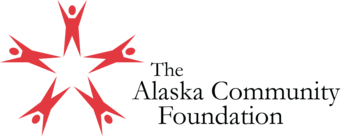This is the last of nine short historical reminiscences to mark the 30th anniversary of the Homer Foundation, Alaska’s first community foundation. This series was produced by The Foundation and written by former board member Tom Kizzia. It was first published in 2021.
In 2008, the Homer Foundation reached a fork in the road. Should it remain an independent community foundation, or join a new statewide organization that would take over some of its growing administrative burden?
Things were going well for Alaska’s first community foundation, even with its fundraising depending mostly on small donors around town. No big million-dollar donor had ever emerged, nor had the Exxon settlement money arrived that had been part of its original design. Still, the Homer organization had an endowment of more than $2 milllion by 2008, and more than $1 million on top of that had been distributed to community nonprofits.
Now a new option appeared on the scene.
Anchorage had followed Homer by four years, creating the state’s second community foundation in 1995. That group, closely tied to the Rasmuson Foundation, decided to go statewide in 1998. Then in 2008, the Alaska Community Foundation established a new program for “affiliate” groups, making it relatively easy for small Alaska towns to get in the business of local philanthropy.
Seward, Kenai, Kodiak and Haines were among the eleven communities who formed new affiliates. Local volunteer boards would fundraise and award grants once or twice a year. Most of the adminstration and investment work was to be handled centrally in Anchorage, though eventually the affiliates would be encouraged to set up endowments to help support their own operations.
After careful consideration, the Homer board decided to stick with its independent model for the Kachemak Bay communities. Local relationships were already good, and growing tighter. Homer wanted to continue giving out grants year-round rather than bend to the statewide cycle. Perhaps most importantly, as an independent nonprofit the Homer Foundation could be fiscal sponsor for community projects. Affiliates, by contrast, would be arms of the Alaska Community Foundation, with policies and sponsorships run by the statewide board in Anchorage.
One of the first such projects to come along was the 2012 community effort to build a new playground at Karen Hornaday Park in Homer. Essential contributions were made by scores of volunteers and donors, but the independent Homer Foundation was able to fill the central role of fundraiser and adminstrator of funds.
Homer’s ability to serve as a fiscal sponsor continues to serve local efforts, with the foundation currently serving as sponsor of an expansion of Homer’s skateboard park and a major rebuilding project at the Kachemak City community center playground.
Though it chose to stay on an independent path, Homer was welcomed as a “partner” by the statewide community foundation. A challenge grant of Rasmuson Foundation money was awarded to Homer, setting up Anchorage funds that today hold more than $260,000, generating $8500 in earnings each year for grants in Homer.
In addition to the 11 affiliates, independent partner foundations like Homer’s have been established in Juneau, Bethel, Chugiak-Eagle River, and for the Arctic Slope in Utkiagvik. Each independent has its own history of bequests and reason for staying separate, but the idea of community foundations to raise local money for good causes has now spread across Alaska.

